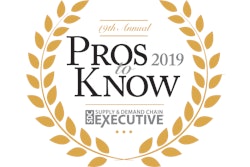
Real-time visibility into a supply chain has quickly gone from being a nice-to-have to an absolute requirement for doing business. And for good reason: real-time visibility means an organization can access the information it needs about its operations when it’s needed, including data on vendors, suppliers and customers, across data siloes. More importantly, it enables businesses to manage to today’s changing consumer expectations – from being able to access order information or make last minute changes to their purchase. This is why real-time visibility is a critical way to optimize business logistics and gain advantage over competitors that are unable to deliver on increasing consumer demands.
Make no mistake, real-time visibility is not a one-size-fits-all solution. It will vary by geography, industry, company and, without question, the business model employed. A great way to start to devise your business’ approach is to understand what real-time should mean for each metric across your supply chain. What data does the company need to track and react to on a continual basis? Who needs to see certain types of data, and how does the freshness of the data dictate its value? Regardless of the update intervals, timing should be synced across the entire supply chain to ensure data accuracy. If one data set is updating its inventory levels in real-time, but another does so every 24 hours, the collective view of inventory will be inaccurate.
By understanding the unique needs of your business, you can more strategically implement solutions and processes that deliver the specific visibility needed, rather than investing blindly to meet the market hype of ubiquitous real-time management.
No matter what real-time visibility looks like for your business, it requires open communication and a constant flow of information across people, departments and systems, both internally and externally—as well as a clear idea of what the organization is hoping to achieve. Here are four benefits that an organization can realize with better operational insight:
1. Maximize Inventory Availability to Avoid Missed Sales
Organizations can leverage technology to gain access to supply chain data that had been previously unavailable. For example, GPS and AutoID sensors can provide companies with updates on the status and condition of their product while it’s in transit. Having access to accurate and up-to-date data points helps organizations make delivery commitments and accept orders where inventory in inbound with confidence. Plus, prices are dropping as these technologies are being made faster, better and cheaper, making them more available to brands looking to get their products in the hands of customers sooner.
2. Enhance Customer Service
Visibility needs to extend beyond the organization. Today’s customers want to follow their product from the time they click “check out,” through the shipping process, to when it’s delivered. They expect the instant confirmation of emails and texts to make them feel connected to the process, and one negative experience can send that customer to a competitor. Companies that can track exactly where their products are in the supply chain can easily share this information with consumers and deliver the customer experience needed to win repeat business. Allowing late order modifications by a customer through managing real time (or near real time) is also an increasing consumer expectation.
3. Optimize and Reduce Inventory while Enhancing Service and Reducing Costs
End-to-end integration is key to ensuring an efficient and cohesive supply chain. By interconnecting supply chain and operational systems across organizational boundaries, brands can unify the disparate data siloes across the supply chain to preempt delays, identify inefficiencies and maximize availability. Organizations should seek out solutions that work across company boundaries to identify and predict issues and opportunities. With these insights, organizations can both enhance their analytics for predictive planning, run real-time material requirements planning scenarios and find opportunities to reconfigure supply chains for optimal performance.
4. Reducing and Automating the Cash Conversion Cycle
With the enhanced confidence and collaboration that Block Chain provides through an immutable and secure record, a new “hands-free,” real-time way of both supply chain and financial integration will be possible. This will allow movements of goods to automatically enable the financial settlement of transactions (based on the agreed terms). A unified view of shipment and receipt (with supporting information) will enable three-way matching across organizations and streamline the resulting financial transactions. This will enhance cash conversion cycles and remove the delays that current AR & AP processes introduce. This will also protect companies from being forced to wait for payment if one of the parties unilaterally attempts to delay beyond agreed terms.
As you strive to improve visibility in your organization’s supply chain, real-time updating may be important. Often the case for moving to real time increases the closer you get to the customer/consumer. Before jumping into an expensive and time-consuming revamp of your entire supply chain’s capabilities, first plan and define what the real-time priorities are for your organization and its customers—and have a clear idea of what the hoped-for benefits are to achieve with that initiative. To not do so will result in a very real problem.



















